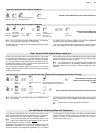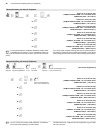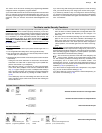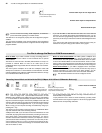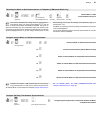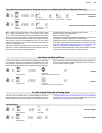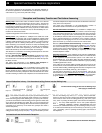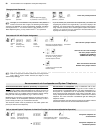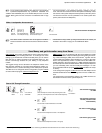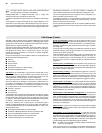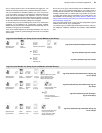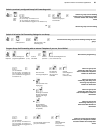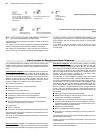
Special Functions for Business Applications 49
The settings configured in the configuration program COMset
concerning the call distribution remain to be unchanged.
These settings are configuration dependent (see p. 23).
This function will delete the existing welcome message immedi-
ately. Even if you hang-up after dialling
443#, the old wel-
come message will already be deleted. The welcome message may
have a maximum length of 24 seconds. After 24 seconds, the recording
will be stopped automatically and you will hear the acknowledgement
tone. If you are using a shorter welcome message, you can stop the
recording by hang-up or pressing the
# key. The welcome message is
recorded directly from the receiver of an internal telephone. The other
option is to transfer the Announcement before Answering as a .wav file
with the PC software COMtools.
COMpact 4410 USB: If you have also stored a recorded Music on Hold
in the PBX, its playing time will be shortened by recording an announce-
ment. (see chapter Recording internal Music on Hold with the PBX
(COMpact 4410 USB and COMmander Basic only) on page 44).
With the PBX COMpact 2206 USB no „Announcement before Answer-
ing“ is possible.
Separation of private and business calls:
The private exchange line
access enables a separated registration of business and private calls
for individual employees. Calls started with the private exchange line
access will get a special code in the call data memory. If private calls at
work have to be paid by the employee himself, he can additionally pro-
tect his telephone with a password against malicious use.
The following settings/authorizations are separately managed for busi-
ness and private calls: Call number presentation, activation of Blocking
or Release numbers, short-code dial number authorization, preferred
exchange lines, charging of the call allowance.
In the call charge data recording it is possible to record the telephone
numbers of private calls truncated to guarantee privacy in opposite to
business calls.
These settings are made in the configuration program COMset
. The pri-
vate password can also be changed on the corresponding telephone.
Project assignment:
The project assignment enables the assignment
of an external call to a certain project/client (e.g. within a lawyer’s
office). In the view of the call data management program the charges as
well as the time expense can separately be listed for the different
projects/clients.
The project numbers may be invented while starting the outbound call,
only the number of digits have to be configured once (2 to 6 are possible).
In case of the system telephones COMfortel 1500/2500 and
COMfort 1000/1200/2000 plus the length of the project numbers
between 2 to 6 digits is also not limited during the entry. Besides this a
project assignment is also possible in case of inbound calls.
In the default factory settings no private password is entered.
Therefore a private call is started only with
90, the Exchange
Line Access Number and the external telephone number.
The access code for the private exchange line access can also be used
for connecting or starting a Query.
☞
N
Recording the Welcome Message (Announcement before Answering) with a Telephone
b 7 O 443 # f * g #
Record and save Welcome
Message „Announcement
before Answering“
secret
password
you will hear the
acknowledgement tone
start
recording
speak the wel-
come message
stop
recording
b 7 O 467 # f #
Listen to stored Welcome Message
secret
password
you will hear the
announcement
stop
☞
Use Call Data to separate Call Charges
☞
Start external Call with private Exchange Line Access
b f (**) 90 X 0 rg
Start external call
internal
dial tone
(for Direct Exchange
Line Telephone only)
private
password
Exchange Line Access Number
and external telephone number
Private
call
or
Z r
Start external call via 1st to 4th
exchange line (COMpact 4410
USB and COMmander Basic only)
Exchange Line Access Number
for the 1st to 4th S
0
port and
external telephone number
or
k
Start private external call with
Short-Code Dial Number
number of the Short-Code Dial
Number memory
☞



